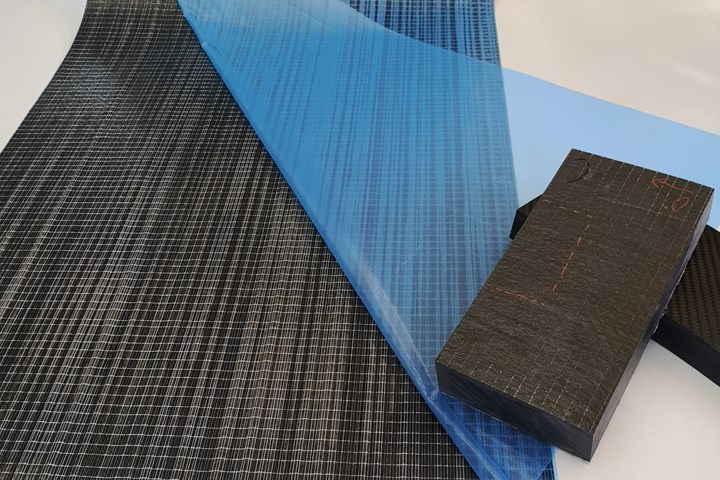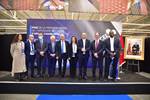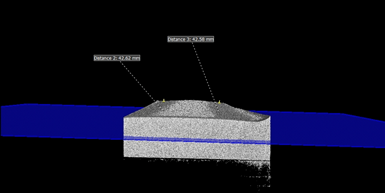Hexcel introduces G-Vent technology for thick, OOA marine structures
Hexcel marine prepregs are available with G-Vent integrated, enabling out-of-autoclave processing with reduced time, cost and autoclave-comparable porosity for highly loaded masts and foils without debulking.

Photo Credit, all images: Hexcel Corp.
Hexcel Corp. (Stamford, Conn., U.S.) has leveraged its experience in aerospace and wind energy to develop a novel technology for out-of-autoclave (OOA) processing. It is reported to deliver significant reduction in process time and cost for marine manufacturers without compromising mechanical performance.
Hexcel’s G-Vent technology targets OOA processing of highly loaded, thick section marine structures such as masts, foils and wind-assisted ship propulsion (WASP) components. Hexcel’s full range of marine prepregs are now available with integrated G-Vent technology, reducing the requirement for debulking steps and ensuring very low porosity (<1%) irrespective of the laminate thickness, according to the company.
To evaluate G-Vent, Hexcel completed a test program with Q.I. Composites Srl (Piverone, Italy), a company that performs non-destructive testing (NDT) in performance marine applications. The program evaluated HexPly 40-layer prepreg samples prepared with G-Vent technology. Carbon fiber panels made with no debulking revealed approximately three times less porosity than those using a typical 10-minute debulk with every second ply. Ultrasonic and computed tomography (CT) scan analysis by Q.I. Composites confirmed the void content results with porosity levels in line with state-of-the-art autoclaved carbon prepreg foils. Hexcel also notes that key tensile, compressive and interlaminar shear strength results were also higher for the G-Vent panels.
Related Content
-
Materials & Processes: Fibers for composites
The structural properties of composite materials are derived primarily from the fiber reinforcement. Fiber types, their manufacture, their uses and the end-market applications in which they find most use are described.
-
Trelleborg launches low-friction thermoplastic composite bearing
The HiMod Advanced Composite Bearing Plus is a dual-layer bearing with a low-friction PEEK liner that doubles as an impermeable sealing surface, in addition to 50% less sliding friction, increased wear performance.
-
Materials & Processes: Composites fibers and resins
Compared to legacy materials like steel, aluminum, iron and titanium, composites are still coming of age, and only just now are being better understood by design and manufacturing engineers. However, composites’ physical properties — combined with unbeatable light weight — make them undeniably attractive.














